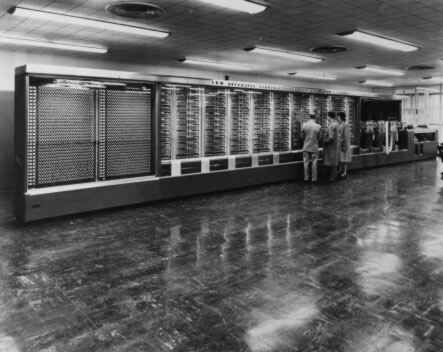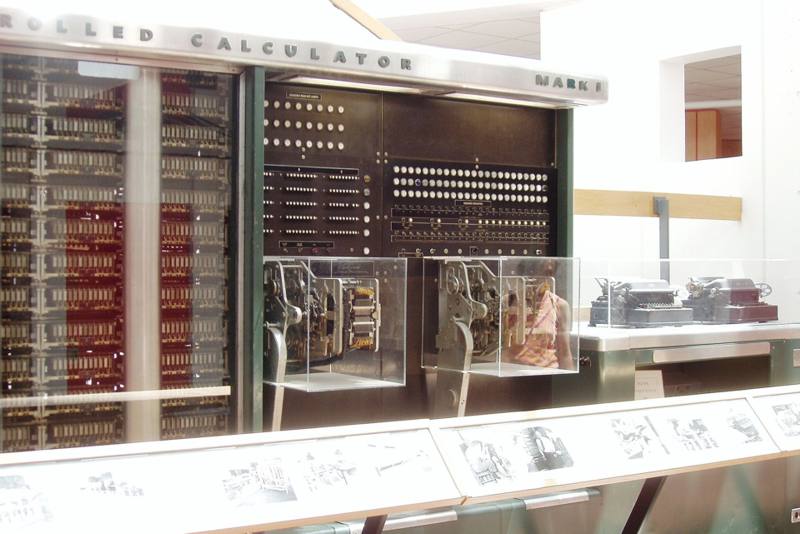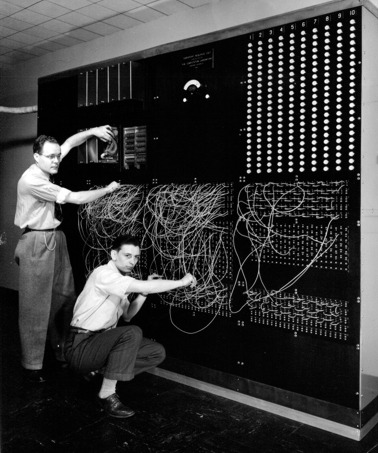| Howard Aiken and the Harvard Mark I |
| Written by Historian | ||||
Page 2 of 3
The Mark I Takes ShapeMeanwhile back at IBM's North Street Laboratory in Endicott, N.Y the Mark I, or rather the ASCC, was being constructed. Its team consisted of Clair D. Lake, a prolific IBM inventor, as chief engineer and Aiken's chief contact, assisted by Benjamin M. Durfee and Frank E. Hamilton.
Harvard Mark I under construction
Progress was slow due to other wartime demands but by February 1944, it was completed. After being switched on briefly to be tested it was then was disassembled and shipped off to Harvard where it was formally presented on August 7, 1944.
A source of conflictAiken and Watson disagreed about how the machine should look - a small detail but it gives you some idea of the differences between the two. Aiken wanted everything to be on view so that scientists could see how it worked. Watson on the other hand wanted it encased in stainless steel shaped and curved into a modernistic symbol of the new age. Watson won but lost the next round. At the dedication of the machine Aiken did not mention Watson and arranged a press conference that gave the impression that he, Aiken, was the brains behind the mechanical brain. Watson was furious. Later Tom Watson recalled that if the two men had had guns there would have been a shoot out. Watson resented Aiken for 20 years and IBM top management remembered the insult for a lot longer. The Finished Mark IThe Harvard Mark I was an impressive beast. The finished Mark I Wrapped in steel and glass it looked the part of the new mechanical brain. Inside though it was an electro-mechanical snail. It was fifty one feet long, eight feet high and weighed five tons. At least 530 miles of cable were used together with 175,000 plug connections, 3500 relays and, more unusual for a computer, 1200 ball bearings! The panels at the left-hand end allowed 60 constants to be set using 1400 dial switches. Next came 72 storage counters each holding 23 digits plus sign. These were used in addition, subtractions and as accumulators and took up one third of the machine. These were standard IBM mechanical registers and they were the heart of the machine. Results from one register were passed to another by electrical contacts. A bank of multipliers and dividers came next followed by functional units which could calculate logs, anti logs and trigonometric functions. Three paper tape feed interpolators allowed tabulated functions to be fed into the calculation. The operation of all of the computational units was controlled by an electro mechanical sequencer and finally a bank of electric typewriters , card feeds and card punch completed the machine. The instructions, i.e. the program, for the Mark I was fed in via a fourth paper tape reader.
Harvard Mark I Computer - Right Segment Source: Wikipedia.
Mark I in the NavyAfter his adventures Aiken was put in charge of the Mark I which was also drafted into the navy. Aiken joked that he was the first person to be commanding officer of a computer. Under naval control the Mark I was run as a military machine. Its operators would march around the highly polished floor and salute each other when ever it was required by protocol! According to one Harvard scientist who saw it in action its attendants "appeared to operate the thing while at attention!"
Harvard Mark 1 in use, 1944 Source: Computer History Museum
The Mark I could add or subtract three numbers every second - giving it an equivalent clock rate of 0.33Hz! The machine was slow but it was a real computer. In operation it may have sounded like the noise of a roomful of old ladies knitting with steel needles - but it was a fully programmable computer. Grace Hopper, the inventor of the Cobol language, was just one of the many programmers who learned their craft on the Mark I. Fred Brooks, one of the important people involved in the IBM 360 project, also learned his craft with Aiken and the Mark I. Indeed the people who made the Mark I do its stuff were probably the first modern programmers. They spent most of their time calculating mathematical tables but they also invented the idea of the subroutine and the subroutine library. The machine spent so long computing Bessel functions that its nickname among the programmers was "Bessy". It also received lots of publicity and was the first machine to stimulate the use of the term "electronic brain" in the popular press. Glossy magazines carried its picture and it became a symbol of the advance of science and technology. To you and me this machine seems so slow as to be unusable. It also had competition from pure electronic machines such as ENIAC soon after it was completed - but it still worked a 24 hour day for 15 years at Harvard! When asked why he did not use electronic components Aiken responded that he thought that they would be too unreliable and it was better to have a slow machine that worked rather than a fast machine that didn't.
|
||||
| Last Updated ( Friday, 17 January 2025 ) |

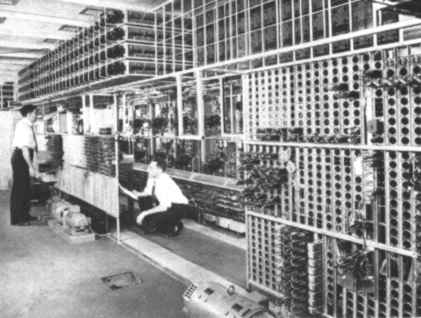
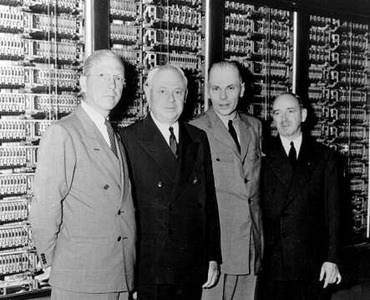 From left to right: Frank E. Hamilton, Clair D. Lake, Howard H. Aiken and Benjamin M. Durfee.
From left to right: Frank E. Hamilton, Clair D. Lake, Howard H. Aiken and Benjamin M. Durfee. 